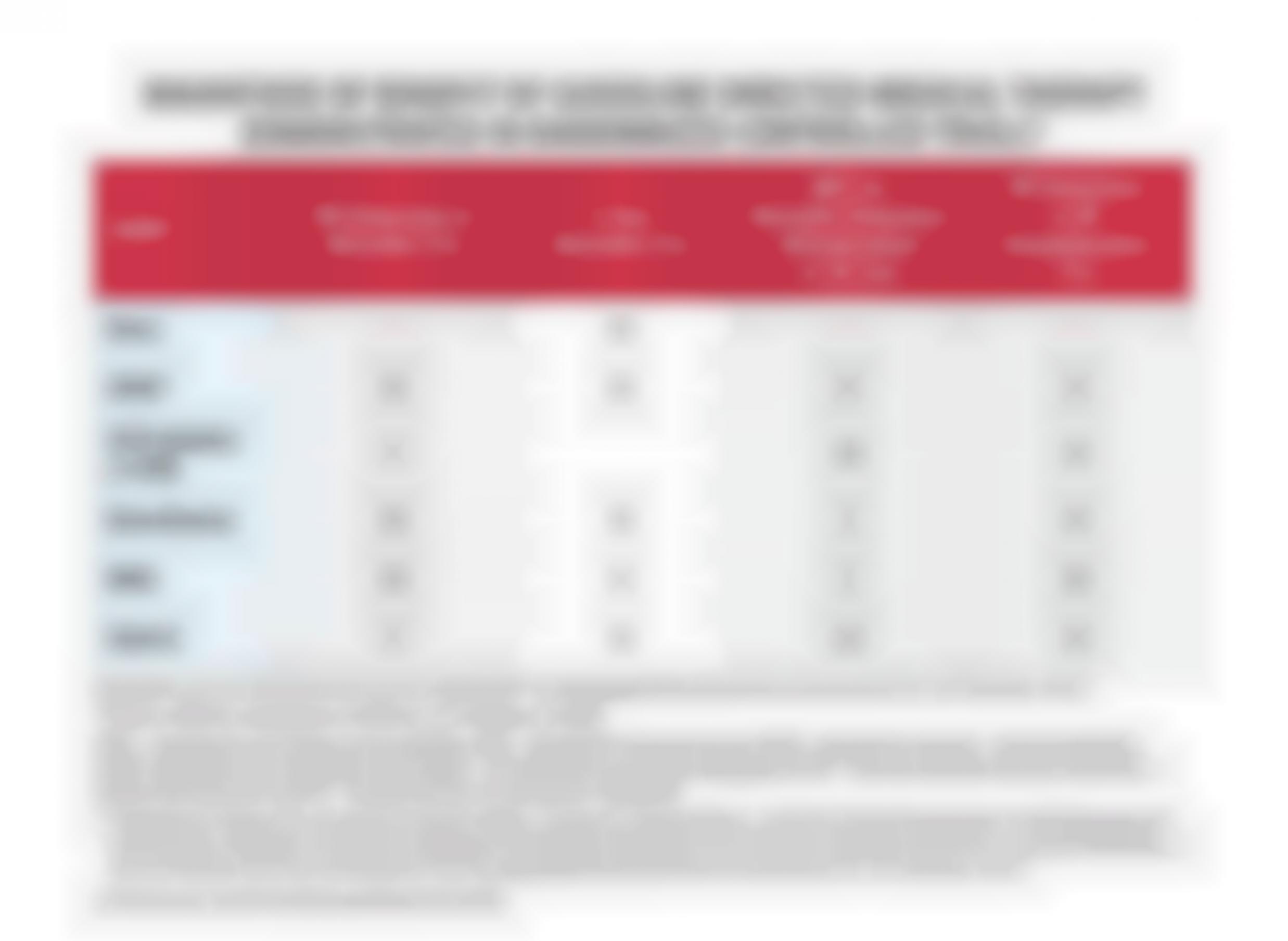Top Line Current Treatment Spectrum
Key Points
- Without guideline-directed medical therapy (GDMT), the 2-year mortality rate of patients with HFrEF is estimated at 35%. The magnitude of benefit of GDMT as demonstrated in randomized controlled trials is shown in Table 14.
- Current use of GDMT in patients with HFrEF remains suboptimal, with only a low percentage of patients being treated with all the indicated medical therapies at target or maximally tolerated doses (Table 15).
- Despite the high prevalence of HF among Black and Hispanic populations, patients of color are frequently underprescribed GDMT.
- Similarly, although there have been increases in the use of advanced therapies including durable mechanical circulatory support and cardiac trans-plantation (Fig. 42), and other recommended therapies such as structural interventions (eg, transcatheter edge to edge mitral valve repair in HF patients with severe mitral regurgitation, transcatheter aortic valve replacement in HF patients with aortic stenosis, or percutaneous mechanical circulatory support in refractory shock), the use of these therapies in indicated patients remains low.
- There are significant disparities and health inequities in access to and use of these advanced therapies. Women, Black, and Hispanic patients have lower rates of use of advanced therapies despite evidence of indications and benefit. For example, referrals for heart transplantation are not equitable by race and ethnicity. Black individuals are receiving heart transplants at rates that are disproportionately lower than patients of other racial groups, particularly in the context of their higher mortality rate from HF.




